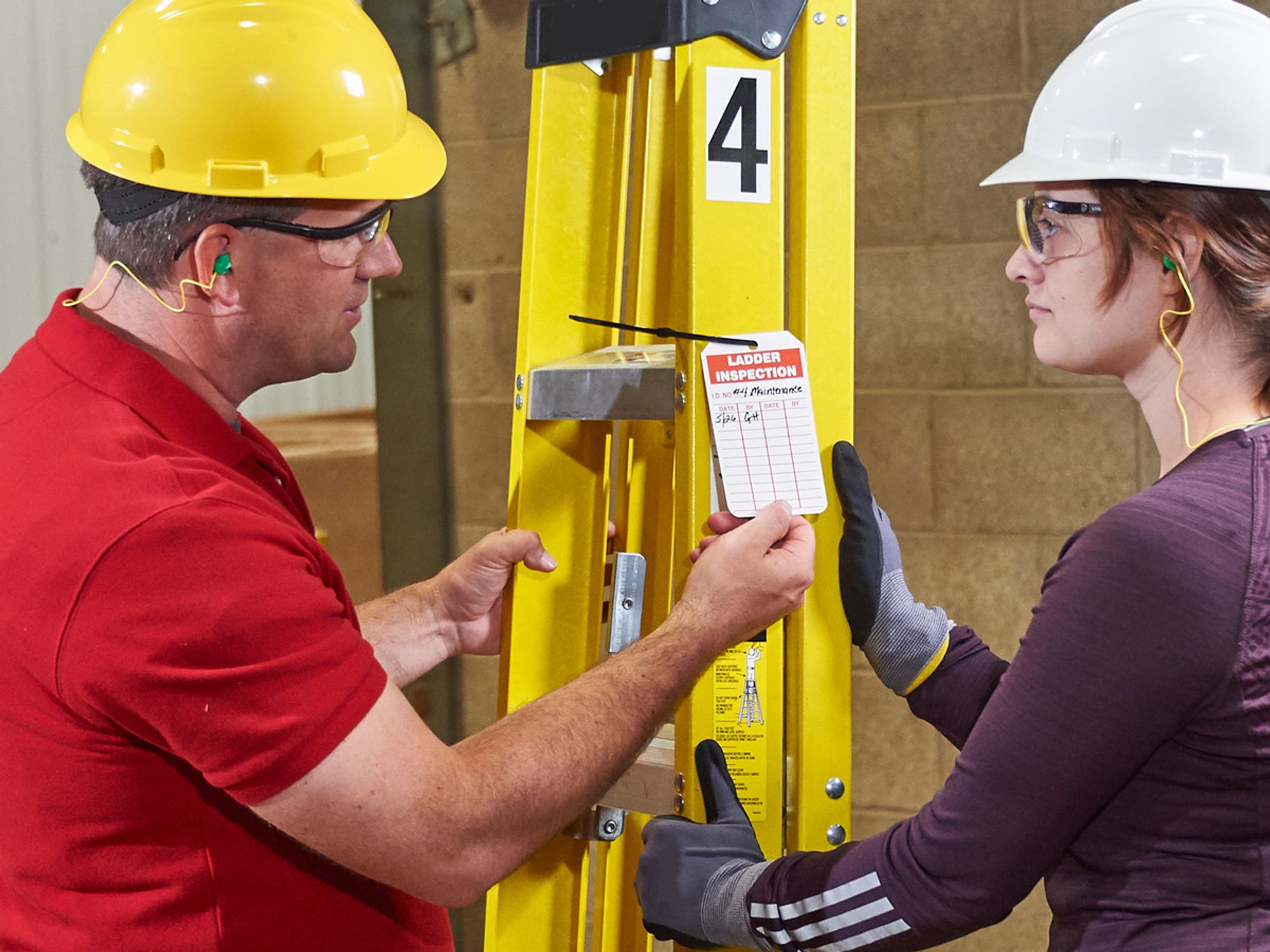Inspection requirements

- Ladders must be inspected before each use, and defective equipment must be removed from service immediately.
The Occupational Safety and Health Administration (OSHA) requires that all ladders be inspected before the initial use every shift. Ladders must also be inspected as necessary, such as after a ladder tips over or potentially gets damaged during use. If a defect is found during use or inspection, the ladder must be immediately tagged “Dangerous: Do Not Use” or with other similar language that meets the requirements of 1910.145. The ladder must also be immediately removed from service until repaired or replaced.
OSHA believes that the employer can determine what should be inspected for each type of ladder before the ladder is used. OSHA recognizes that the inspection done before the first use of the shift may be different from an inspection conducted “as necessary.” For example, an inspection done before the first use may include a check that the rungs are parallel and the footing is stable, but an inspection conducted if a ladder is struck by a vehicle may look for structural cracks, missing rungs, or bent spreaders.
In some workplaces, employees might use plastic or metal stepstools with one, two, or three steps but without siderails. These devices do not meet OSHA’s definition of a portable ladder and are not technically subject to pre-use inspections. However, they are working surfaces that must be inspected regularly and as necessary. Training employees to perform pre-use inspections can help fulfill the regular inspection requirement and help ensure that employees do not climb on damaged stools. During an OSHA inspection, the employer could be asked how often those stools are inspected.
